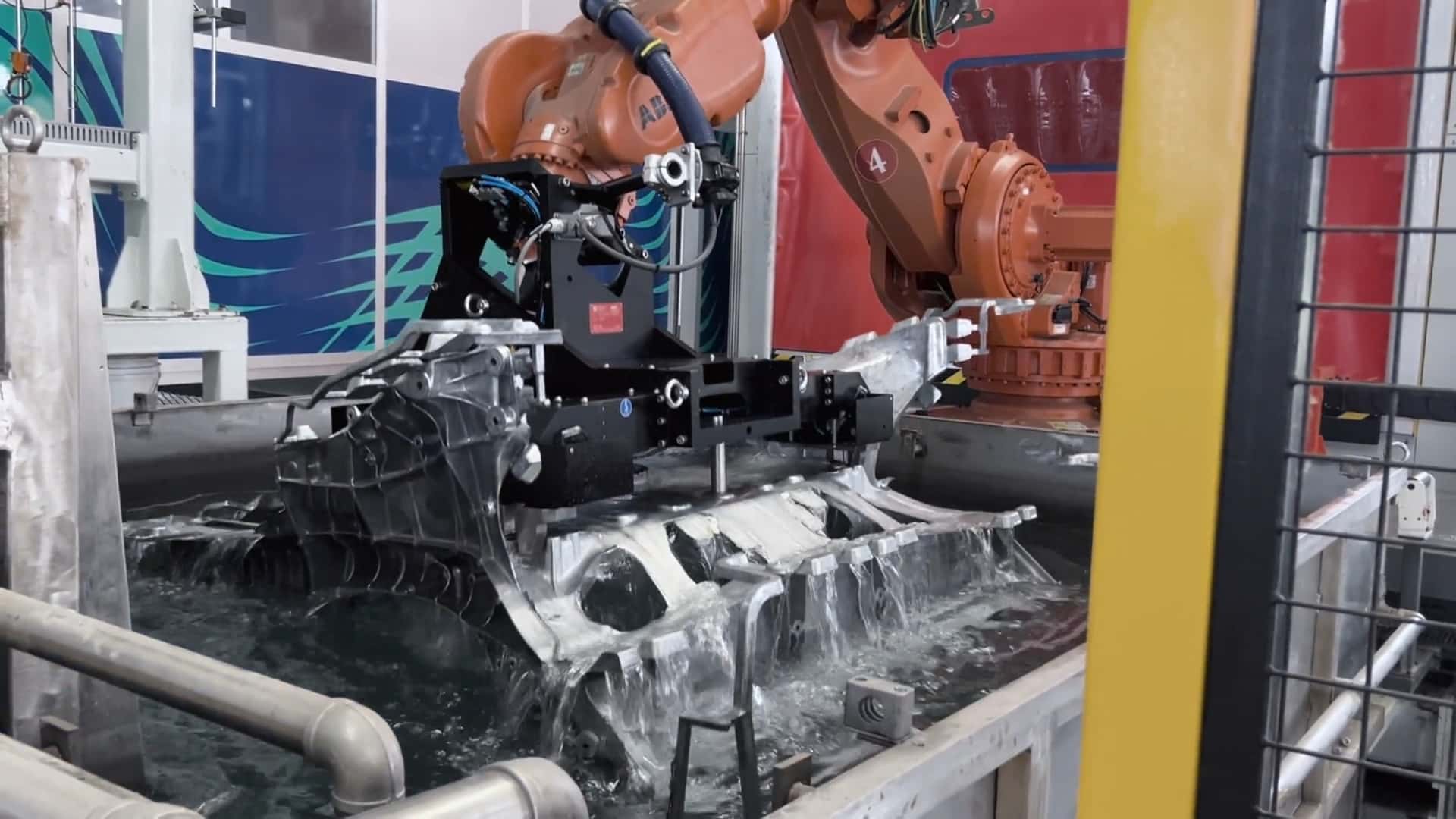
- Ford is reinventing the traditional car factory it established more than a century ago with the Model T.
- The new Universal EV Production System splits the traditional single assembly line into three distinct sections that meet at the end.
- Each line is responsible for each big part of the car—front, rear, and center.
Besides adding more automation, the traditional car factory assembly line that Ford engineered to get the Model T into customers’ hands as quickly as possible has changed very little for over a century. But the American auto giant is trying to reinvent how cars are made yet again with something called the Universal EV Production System.
It’s part of the company’s $5 billion bet on creating a modular electric car ecosystem that will act as the backbone to its upcoming portfolio of affordable EVs, starting with a $30,000 battery-powered pickup due in 2027.

Everything has been redesigned from the ground up with speed and cost savings in mind, including how the cars are assembled. Traditionally, the bare body travels on a conveyor belt, where workers attach everything else: the wiring, the dash, the doors, the carpets. The cool “marriage” step, where the engine and transmission are mated to the body, is done somewhere along the same line.
Not anymore, though. The Ford Universal EV Production System splits the single assembly line into three separate lines that converge at the end.
This is possible because there’s no gas engine and transmission to deal with, but also because Ford’s upcoming affordable EVs will benefit from huge aluminum unicasting pieces that we’ve become accustomed to thanks to Tesla. These replace dozens of smaller parts and allow the front and rear parts of the car to be assembled separately.
In Ford’s world, each of the three separate lines is responsible for one big part of the car. One handles the front end, one is for the rear, and one puts the center of the car together—which also contains the structural lithium iron phosphate (LFP) battery pack.
The American automaker calls this topology an “assembly tree.” On the battery sub-assembly line, workers mount the seats, consoles and carpeting. The parts needed to put everything together travel down the assembly tree to operators in a kit that includes all fasteners, scanners and power tools needed for the job at hand—and in the correct orientation for use.
Furthermore, because the car itself is split into three separate sub-assemblies, access to mount fasteners and small parts is much easier for the operator. I can see where that makes sense.
A long time ago, I had the opportunity to work in one of Ford’s car factories in Europe to help build a brand-new people carrier. It was fascinating, but also exhausting. I remember sweating like an Olympic athlete after struggling to install the carpet through one of the door openings without holding up the entire line.
On other sections of the line, I had to constantly reach to the left or the right to pick up the correct bolts and power tools to keep the line going. One small mistake would put the whole line on hold, which means fewer cars would be built that day, and less money made.
With Ford’s Universal EV Production System, none of this should happen. The company says this new approach to building cars drastically improves ergonomics for employees by reducing twisting, reaching and bending.
When everything is said and done, building Ford’s new $30,000 electric pickup could be up to 40% faster compared to the other cars manufactured at the Louisville Assembly Plant, the first factory to have the new system implemented.
To make its new electric midsize pickup, Ford is investing nearly $2 billion in its Kentucky factory, where the Ford Escape and Lincoln Corsair gas-powered crossovers are currently built. The project, which is supported by an incentive offer from the Kentucky Economic Development Finance Authority, will secure 2,200 hourly jobs.
The $2 billion investment in the Louisville plant is in addition to the $3 billion investment in the BlueOval Battery Park in Michigan, where the American automaker will build the prismatic LFP batteries that will power the upcoming midsize electric pickup.







